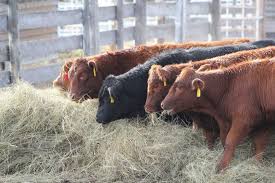Brad Schick, University of Nebraska-Lincoln | Feb 14, 2023
Understanding a hay test can be difficult. Today, we will look at fiber tests, Acid Detergent Fiber or ADF and Neutral Detergent Fiber or NDF.
Both ADF and NDF are part of the detergent analysis system used to analyze forages. NDF provides us with a measure of the forage sample’s cell wall, basically the total fiber. This includes the cellulose, hemicellulose, lignin, and silica portions of the forage which are the primary structural components for all plants. ADF, on the other hand, measures only the least digestible parts of the plant; cellulose, lignin, and silica.
NDF measurements correspond with voluntary intake and rumen fill, how much and how fast an animal can eat. They also are a measure of how much energy is available to the animal. Usually, a low NDF reading means more energy available to the animal. The more mature a plant becomes, the more structural components it accumulates resulting in higher NDF readings and poorer quality feed. NDF levels can vary from 80% in straw to less than 40% in early blooming alfalfa.
ADF is directly related to the digestibility of the feed, measuring the indigestible portion of the plant. As ADF increases, digestibility decreases. This means that high ADF forages are low in energy. Alfalfa at early bloom has an ADF of 30-35% while a late bloom alfalfa has an ADF usually above 40%. Straw will have an ADF nearer to 50%.
ADF and NDF measure the sample’s fiber content, affecting digestibility and forage intake which help predict animal performance. Understanding these values set us up for next week’s discussion as we look at a measure of energy, TDN.














